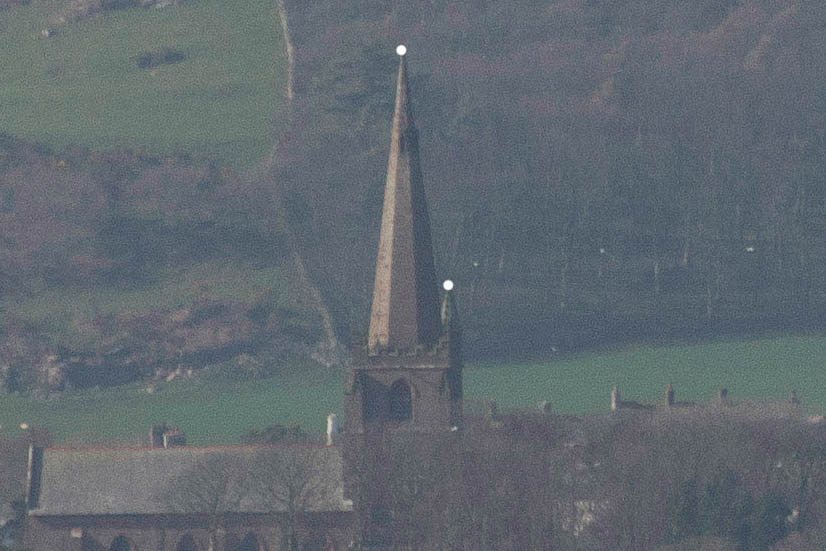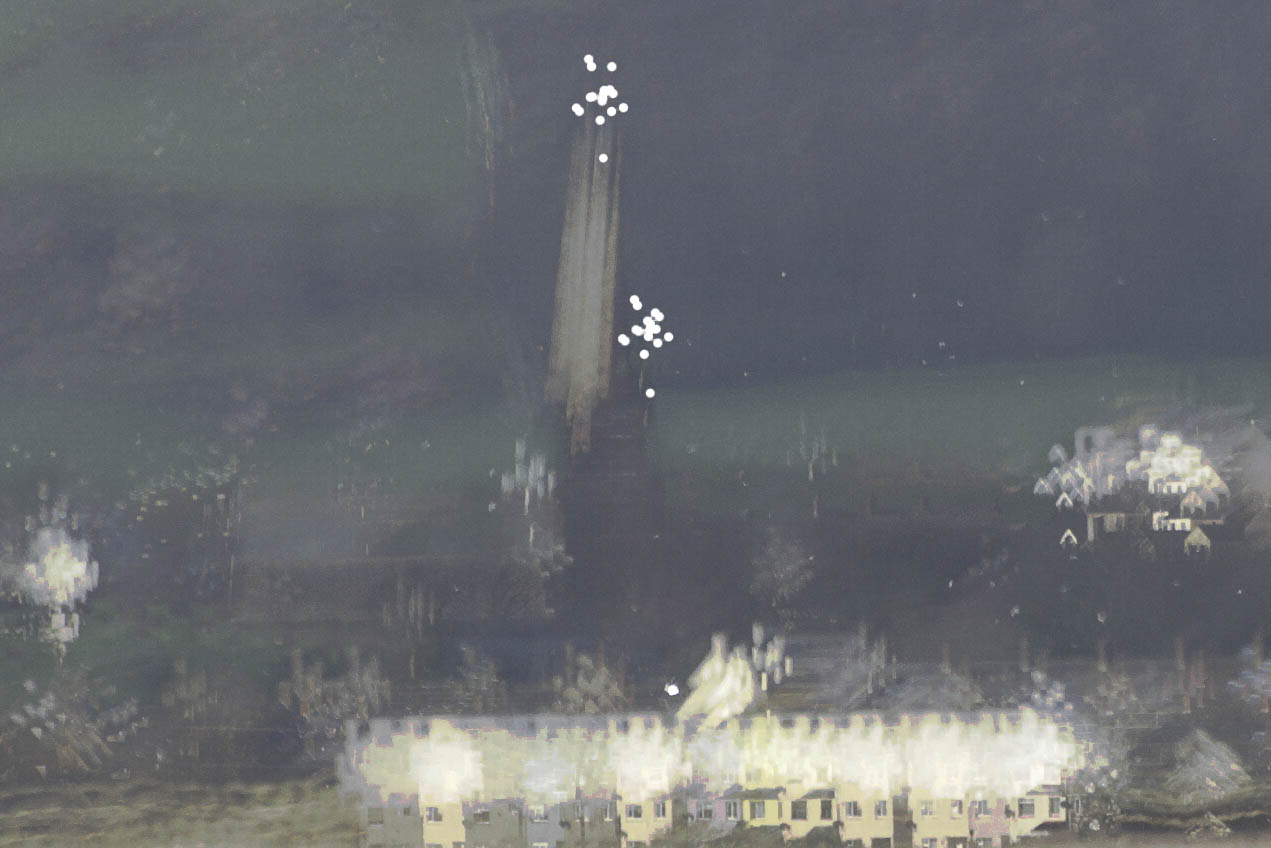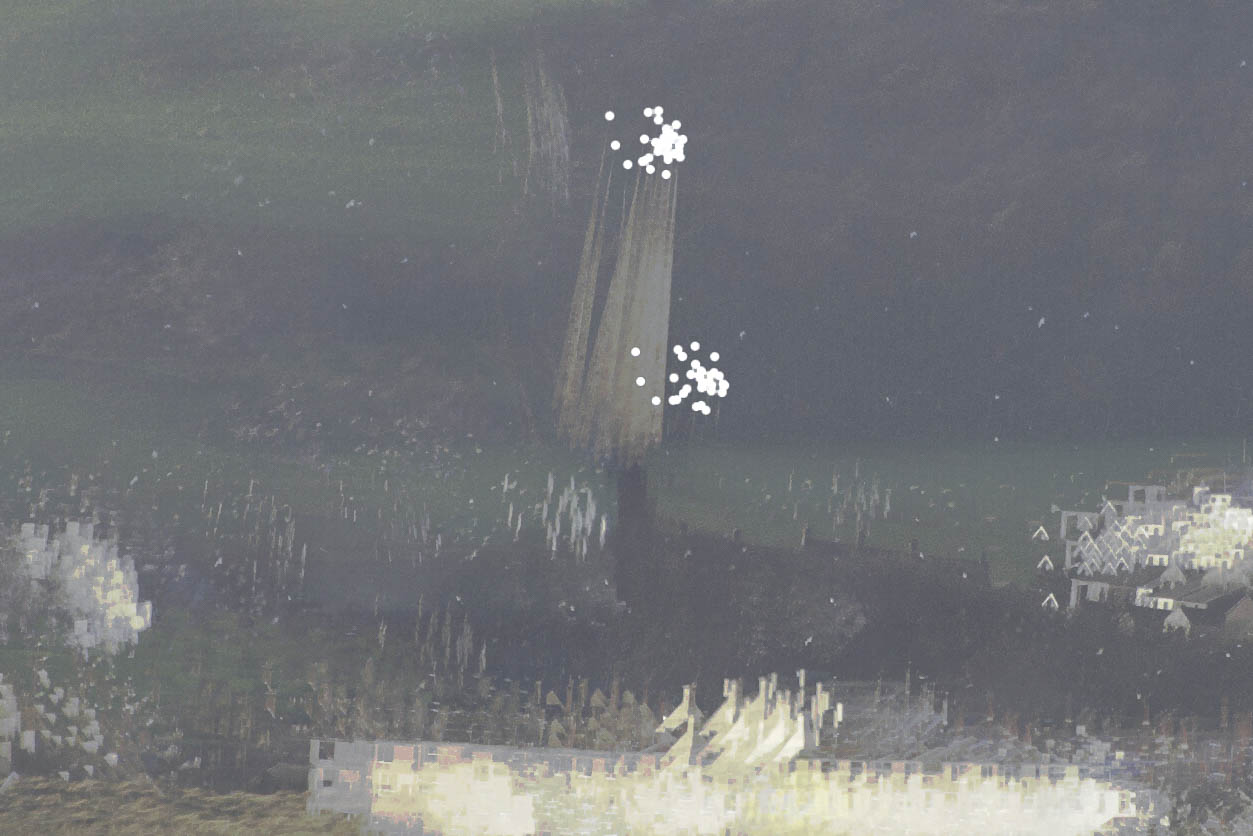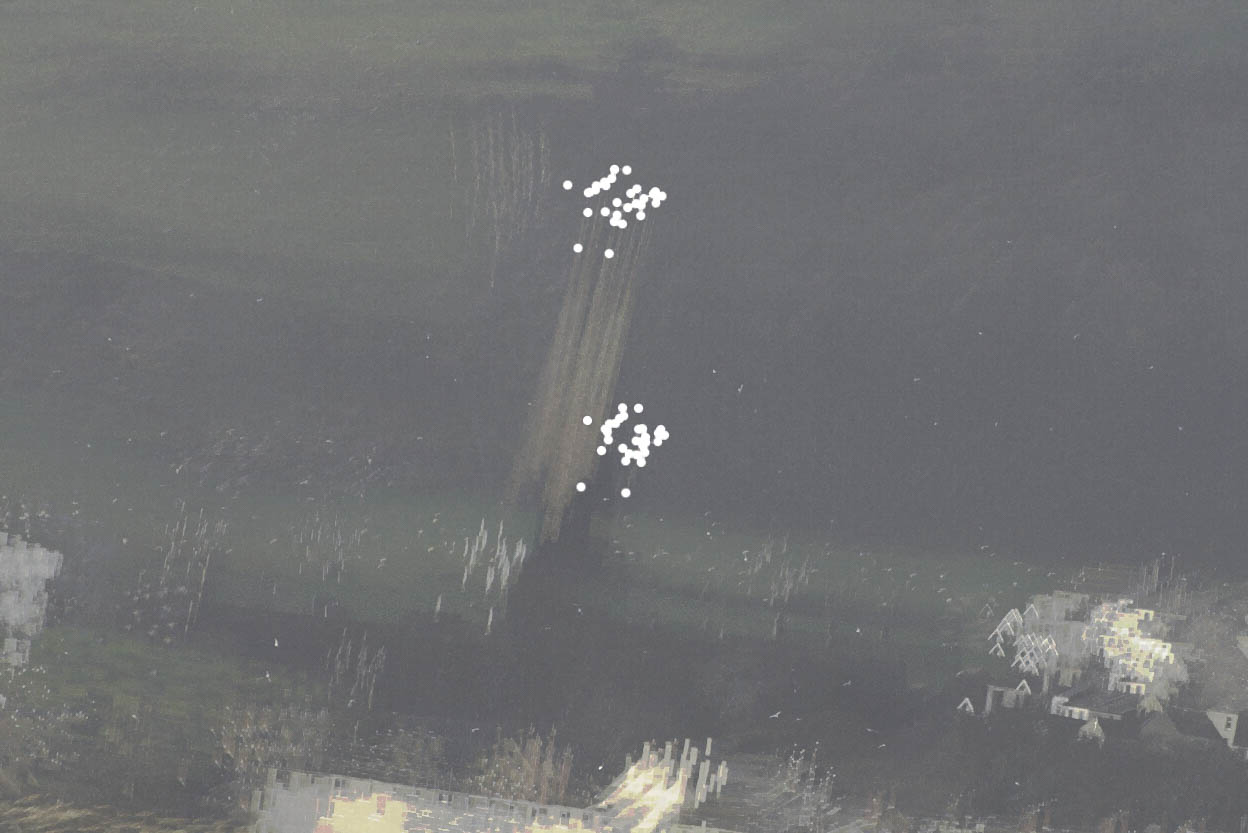| Joined: | Mon Apr 2nd, 2012 |
| Location: | South Lakeland, UK |
| Posts: | 4064 |
| Status: |
Offline
|
Firstly a general full D800 frame view of the target at 300mm, distance to spire approx 5 miles. I have added two spots to each image to help track the movement more easily. On some images the spots are a bit of a guess, but not very far out of position.

and a 100% crop:

This is the StarStacker grouping of the control cluster, camera stationary, well wobbling a bit, but not being moved by the motor! 18 exposures, again 100% crop.

This is the StarStacker cluster of the ascending set, 34 exposures with the camera being raised by the motor without a counterbalance, ideally all the dots should be in exactly the same place.

This is the StarStacker cluster of the descending set, 31 exposures with the camera being lowered by the motor without a counterbalance, it doesn't seem to show any signs of running more quickly than the ascending set.

These images are stacked with the frame fixed but revealing each layered image and the differences between the images is visible. Bear in mind a 50mph wind was blowing at the time, the camera was being buffeted badly .
Quite obviously the test needs repeating without the gales, but at least I now know I can adjust the polar scope and it's better than it was. There is no longer a tracking error pattern.
____________________
Robert.